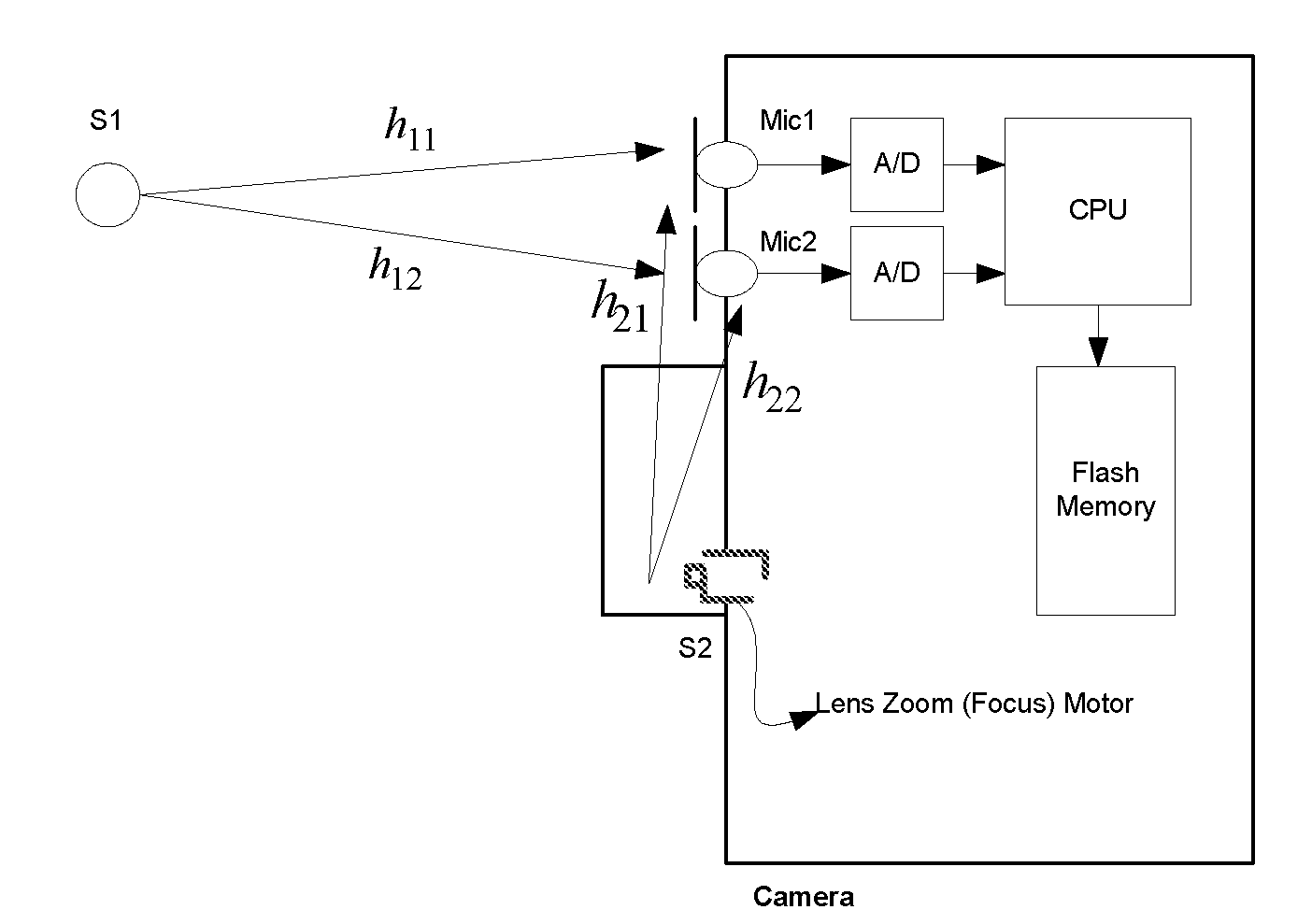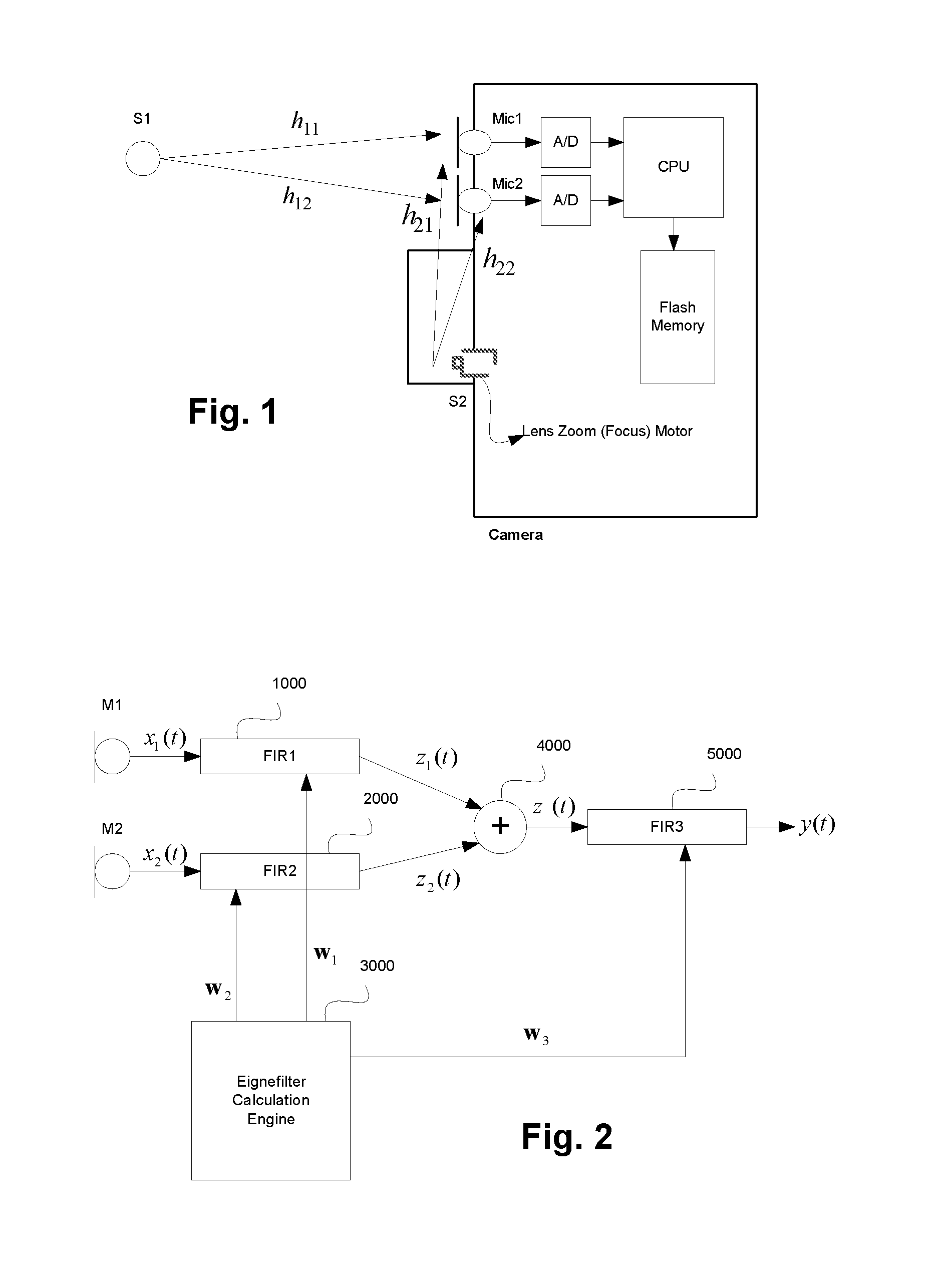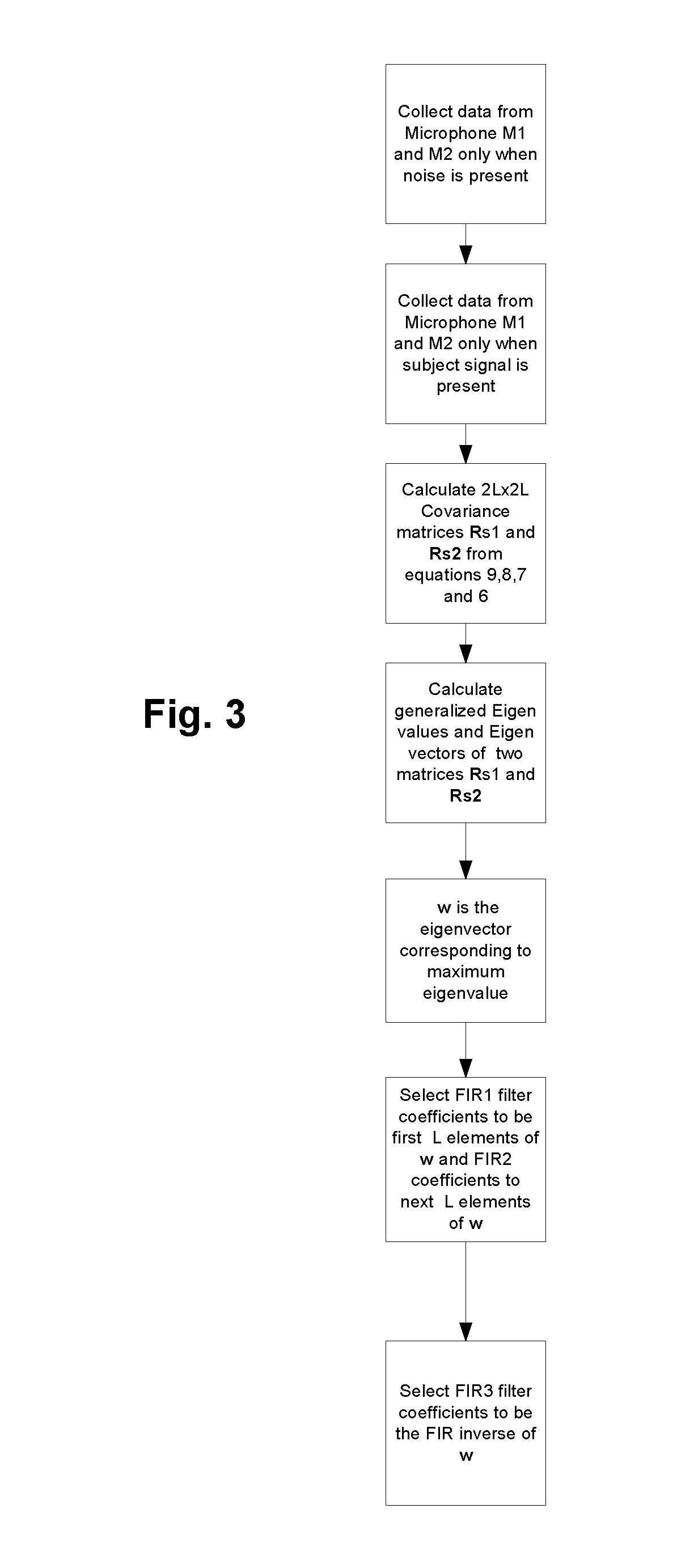Motor noise reduction circuit
a noise reduction and motor technology, applied in speech analysis, color television, television systems, etc., can solve the problems of user hearing, built-in feature, and rather expensive way of achieving this effect by using quieter zoom and focus motors, and achieve the effect of reducing nois
- Summary
- Abstract
- Description
- Claims
- Application Information
AI Technical Summary
Benefits of technology
Problems solved by technology
Method used
Image
Examples
Embodiment Construction
[0032]The invention will be explained in detail using the following notation throughout the description:
t is the index to a sample.
x1 (t) is the digitized signal from microphone M1.
x2(t) is the digitized signal from microphone M2.
z1(t) is the output of the first FIR filter with input xj(t).
z2(t) is the output of the second FIR filter with input x2(t).
z(t) is the output summation of z1(t) and z2(t).
y(t) is the output of the third FIR filter with input z(t).
w1(k) are the filter coefficients for the first FIR filter.
w2(k) are the filter coefficients for the second FIR filter.
w3(k) are the filter coefficients for the third FIR filter.
[0033]Consider a video camera as shown in FIG. 1 and let x1(t) represent the output signal of microphone (M1) and x2(t) represent the output signal of microphone (M2). In this case, the following relationship holds:
[x1(t)x2(t)]=[h11h12h21h22][s1(t)s2(t)](1)
where S1(t) represents the equivalent time domain signal of the subject which is the desired signal an...
PUM
 Login to View More
Login to View More Abstract
Description
Claims
Application Information
 Login to View More
Login to View More - R&D
- Intellectual Property
- Life Sciences
- Materials
- Tech Scout
- Unparalleled Data Quality
- Higher Quality Content
- 60% Fewer Hallucinations
Browse by: Latest US Patents, China's latest patents, Technical Efficacy Thesaurus, Application Domain, Technology Topic, Popular Technical Reports.
© 2025 PatSnap. All rights reserved.Legal|Privacy policy|Modern Slavery Act Transparency Statement|Sitemap|About US| Contact US: help@patsnap.com



